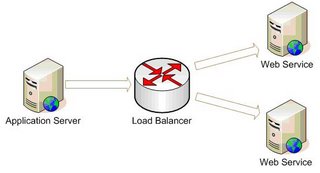.NET 2.0 DateTime uses two-bit flag to indicate time zone: Local, UTC, or unspecified (default)..NET 1.1 does not use that flag.
.NET 2.0 serializes DateTime with time zone information for “Local” and “UTC” DateTime object. There is no time zone for “Unspecified” DateTime object. By default, .NET program uses “Unspecified” DateTime value as local time. In distributed system across time zones, this may bring troubles.
.NET 1.1 always serializes DateTime with time zone.
Below is an example tested in our project:
--------------------------------------------------
public class DateTimeSample
{
private System.DateTime m_dtDateTime =
DateTime.Parse("08/10/1971");
public System.DateTime LocalTime
{
get
{
return m_dtDateTime.ToLocalTime();
}
}
public System.DateTime Default
{
get
{
return m_dtDateTime;
}
}
public System.DateTime UniversalTime
{
get
{
return m_dtDateTime.ToUniversalTime();
}
}
}
.Net 1.1 serialization:
<?xml version="1.0" encoding="utf-16"?>
<DateTimeSample xmlns:xsd="http://www.w3.org/2001/XMLSchema"
xmlns:xsi="http://www.w3.org/2001/XMLSchema-instance">
<LocalTime>1971-08-10T20:00:00.0000000-04:00</LocalTime>
<Default>1971-08-11T00:00:00.0000000-04:00</Default>
<UniversalTime>1971-08-11T04:00:00.0000000-04:00</UniversalTime>
</DateTimeSample>
.Net 2.0 serialization:
<?xml version="1.0" encoding="utf-16"?>
<DateTimeSample xmlns:xsi="http://www.w3.org/2001/XMLSchema-instance"
xmlns:xsd="http://www.w3.org/2001/XMLSchema">
<LocalTime>1971-08-10T20:00:00-04:00</LocalTime>
<Default>1971-08-11T00:00:00</Default>
<UniversalTime>1971-08-11T04:00:00Z</UniversalTime>
</DateTimeSample>
